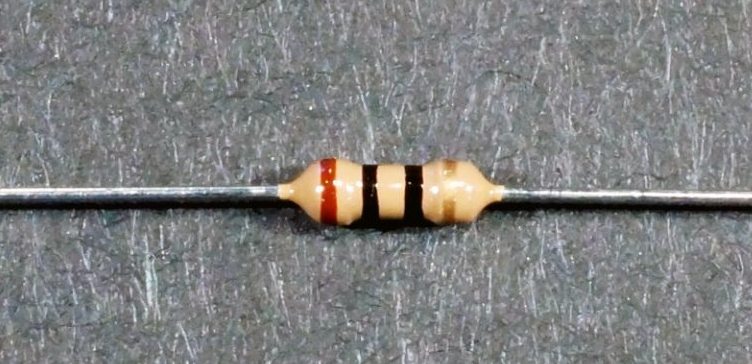Different components are used to improve the functionalities of programmable devices, such as Printed Circuit Boards (PCBs). One of the common components used is the resistor. As the name suggests, it helps to “resist” or to restrict the flow of current up to a certain level.
The resistance derived from the resistor goes a long way to bolster the protection of the circuit board from overcurrent and undercurrent.
Modern consumer electronics tend to use the 0 Ohm Resistor and there are some reasons behind this. In this article, we explain the underlying concept of 0 Ohm Resistor, why it serves as a jumper-replacement in circuit boards and some of the benefits.
What is a 0 Ohm Resistor?
It is a type of resistor that doesn’t have any resistance. That is from the surface meaning, because when we dig deeper, we could see that it does have some element of resistance.
But why would anyone want to use a 0 Ohm Resistor in a circuit board, considering that it doesn’t appear to offer much resistance to current flow?
That question brings us to another concept called jumper.
What is a Jumper in Circuit Design?

A jumper is a “pair of prongs” or a “short length of conductor” that helps in establishing a connection in a circuit board. The connection made by the jumper is designed to close, bypass or open a part of an electronic circuit – for current to flow.
Why 0 Ohm Resistor Makes a Better “Jumper”
Considering the benefit of having a jumper in a PCB, it is rather discouraging to see that it doesn’t use the automated process of inserting components in a PCB. Rather, jumpers tend to be manually connected or placed in the circuit board.
This does not only take more time, but also makes the design or placement process more complex. The best option is to use a 0 Ohm Resistor. This type of resistor serves the same purpose as a jumper does (such as opening, closing and bypassing a part of the electronic circuit). To make the design process less complicated, the 0 Ohm Resistor is placed on the circuit board using an automated insertion machine.
Does the 0 Ohm Resistor Lack Resistance?
Considering the fact that it is rated zero (0), one may be forced to believe that the 0 Ohm Resistor doesn’t have any real resistance value. While that appears to be the case, this type of resistor actually has some resistances.
Worthy of mentioning is that it is not a real resistance value of zero, because it has a small resistance value.
Currently, there are specific variations as to the levels of resistances that the 0 Ohm Resistor can have. They are broadly called the accuracy levels or resistance deviation. They are three (3) in number, and these include:
- F File with less than 10mΩ
- G File with less than 20mΩ and;
- J File with less than 50mΩ
Thus, we can say that the small resistance value supported by the 0 Ohm Resistor doesn’t exceed 50mΩ.
Common Types of the 0 Ohm Resistor
If you are to choose a 0 Ohm Resistor, it has to be based on the type or the method of identifying it. There are two (2) major types and these are:
1. SMD 0 Ohm Resistor
This is the commonest of the 0 Ohm Resistor types, because it is placed with the Surface Mount Devices (SMDs).
This type of 0 Ohm Resistor is typically identified with the printing of a single “0” or the printing of three “000” on the surface.
2. Wire Wound 0 Ohm Resistor
This is the type of 0 Ohm Resistor that uses a wire. The wire is made into a single black strip and wrapped around the resistor’s surface.
Important Design Considerations for the 0 Ohm Resistor
As much as this type of resistor can offer up to 50mΩ, it also has potential downsides. You want to juxtapose the potential upsides and drawbacks to using 0 Ohm Resistor in your circuit board before making a decision.
Below are some of the important design considerations to make and why those are important:
3. Resistor Challenge
Recall that the 0 Ohm Resistor can offer between 10mΩ and 50mΩ accuracy levels of resistance deviations. However, the choice of the resistance value to use depends on the target applications.
The ideal resistance value should be the one that can comfortably handle the current flow regulation in the target application.
4. Heat Dissipation
Despite the small resistance value it offers, 0 Ohm Resistor is still not a “real component for circuit boards.”
Depending on the applications and the working conditions, you may find out that the resistor is susceptible to excessive heat dissipation, especially when current flows or passes through it.
Benefits of Choosing the 0 Ohm Resistor
In addition to working as a jumper in the circuit board, the 0 Ohm Resistor also has a number of benefits that cannot be overlooked.
Below are some of the potential upsides:
5. Using 0 Ohm Resistor Makes PCB Design Copying Impossible
It is common today, to migrate or copy the previous designs of a Printed Circuit Board (PCB) and use the same to make new designs. However, the reversal is the case with the 0 Ohm Resistor that prevents PCB reverse engineering to a considerable extent.
To do this, digital circuit designers are encouraged to do any of the following to prevent reverse-engineering the circuit board:
- Strategically placing the 0 Ohm Resistor on different tracks to make it nearly impossible to copy the designs.
- Using different resistor color codes to mislead copycats from getting the accurate color marking the 0 Ohm Resistor.
6. Automation and Cost-Optimization
Using the 0 Ohm Resistor helps you to save costs because you wouldn’t be relying on two pick-and-place (automatic) machines for the job. Instead, the 0 Ohm Resistor doesn’t use wires and therefore, foregoes the lengthened design time and saves costs too.
Final Words
Working with a 0 Ohm Resistor helps you to integrate a similar function as a jumper would on the circuit board, while helping you to keep the design in-house and save costs.

